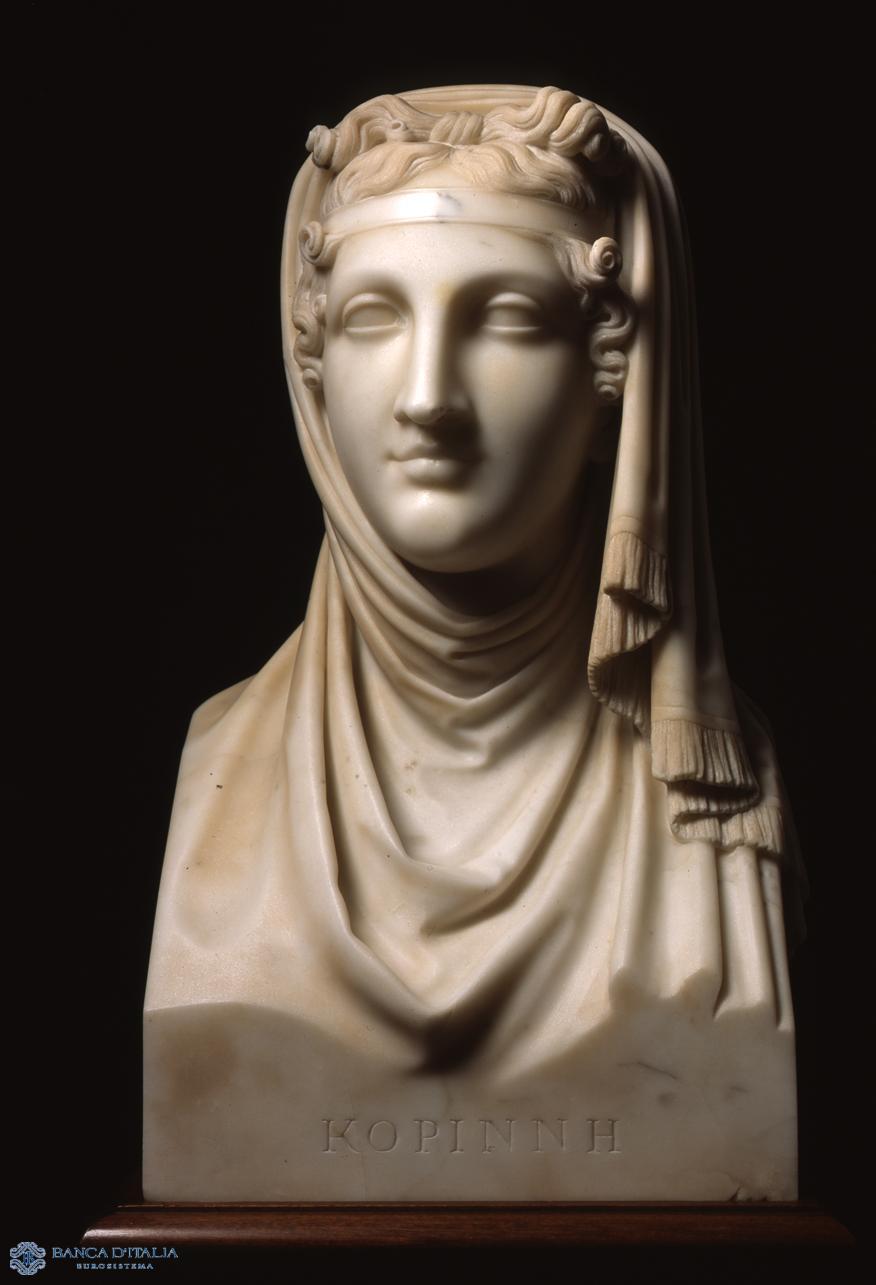Antonio Canova modelled the herm Corinne in 1819. At the time, having won international renown as the great Venetian exponent of the Neoclassical school, he was working on the preparatory drawings for the Temple at his birthplace of Possagno, a building in which the artist gave full expression to his original conception of the Neoclassical ideal.
The bust, in white marble, is of the head and neck of a woman. A scarf is draped around her shoulders and over her head, falling in folds on the left side. The light, a key element in all of Canova’s work, gently illuminates the forms and renders in flesh the theme of grace, one of the elements of originality that the artist brought to the international Neoclassical movement.
The Corinne, embodiment of Canova’s contribution to the art of his time, reinterprets, in the sobriety of its forms, the portraiture of Ancient Rome and the idealistic purity of Greece. Here, the austerity that characterizes the works of other international exponents of the Neoclassical school, above all the French painter Jacques Louis David, gives way to a more intimate and emotional relationship with the viewer, a relationship which rests on the grace, the trembling, tenderly emotive purity of the forms.
The work is a captivating representation of the theme of ideal, pensive purity expressed through a language founded on the relationship with the ancient world, projecting its emotive resonance in an eternal, idealistic world.
Antonio Canova, Corinna
Corinne
Sculpture
19th century AD
Portrait

Artist
Date
1819
Material and technique
White marble
Measurements
53 x 37 cm
Compiler
Antonio Del Guercio
